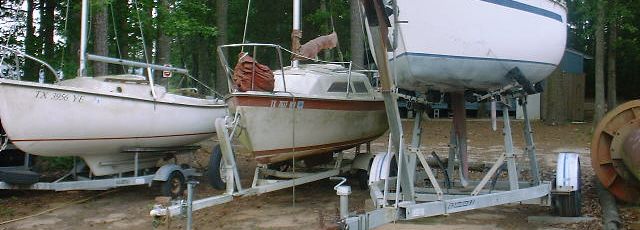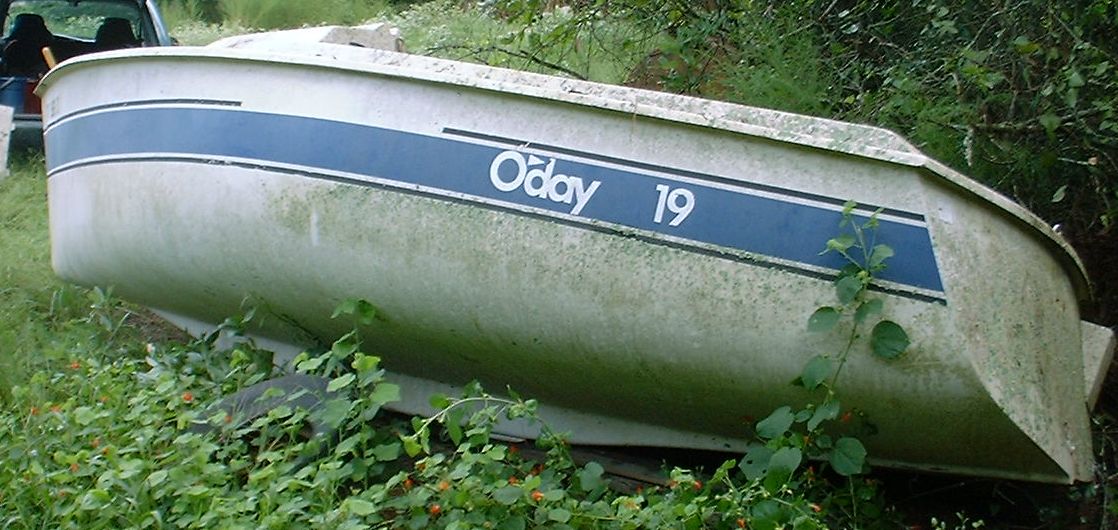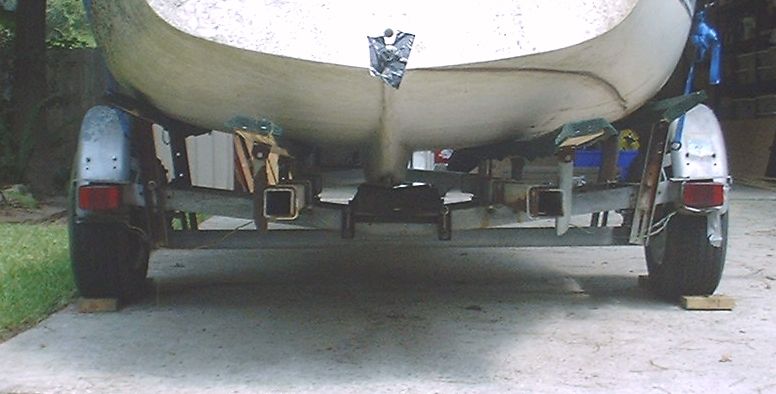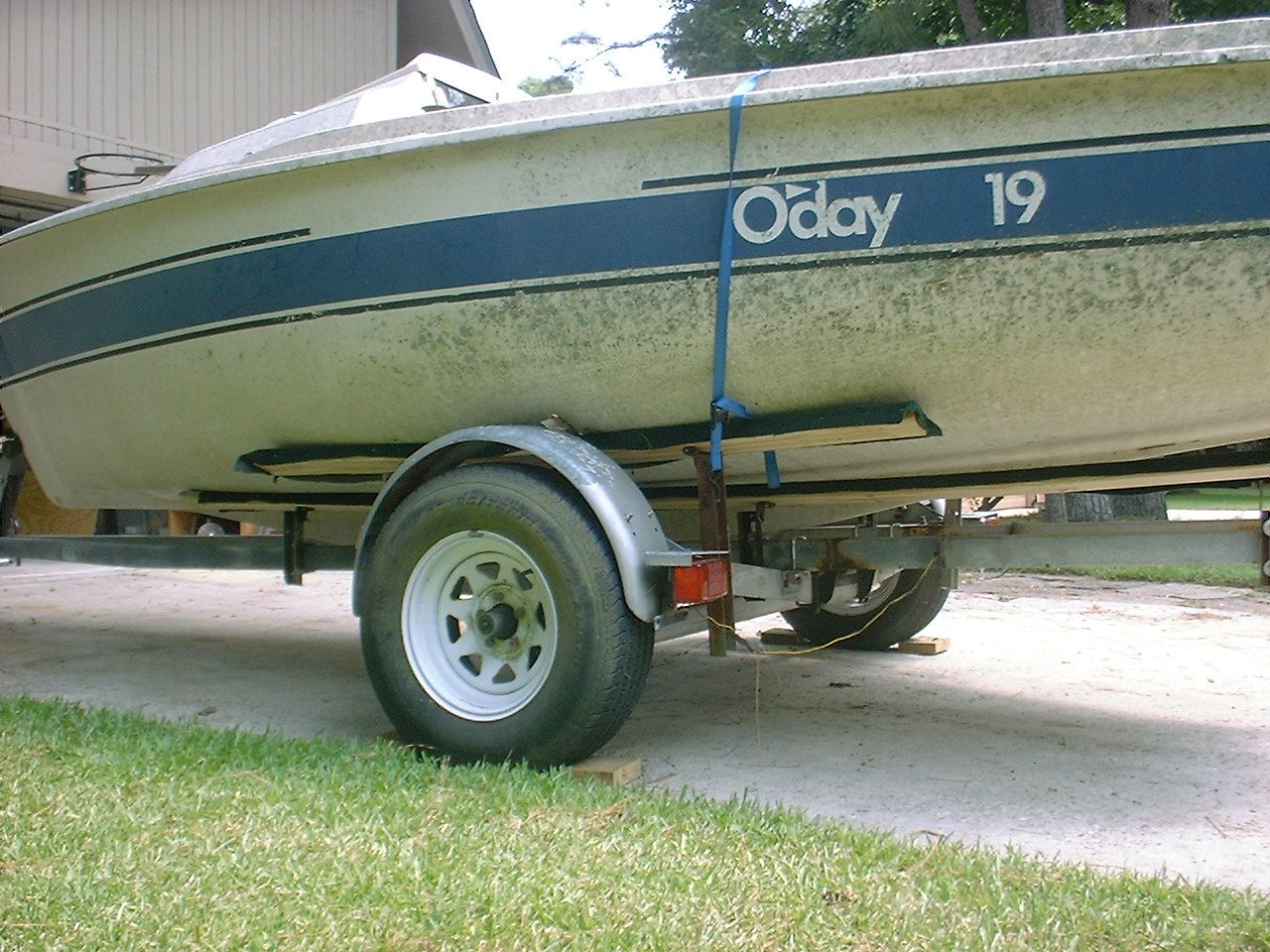Perfect Type of Shoal Keel for Sailboat
Article By Shorty Various Keel Types on Small Sailboats
Various Keel Types on Small SailboatsAll sailboats are good, and they all need some kind of keel or daggerboard. Each type has certain advantages and compromises, so whether you like them or not is mostly based on how you intend to use the boat. For my purposes, I like to sail around in shallow areas and drag my boat up on the beach often. I have kept boats in slips at marinas, but I much prefer to carry all my boats home with me so I prefer lighter boats that are easy to trailer.
The picture to the right has 3 of the most popular types of keels on small boats. From left to right:
Compac 16 with a shoal keel
Vagabond 17 with a swing keel
unknown sailboat with deep keel
Problems With Various Types of Keels
Vagabond 17 - I love this boat for many reasons, but don't like the keel. It is about 390 lbs which has to be cranked up and down with a winch in the cockpit. You can sail with the keel cranked up, but since the keel pivots, when it is up the CLR is moved further aft throwing off the balance between the keel and the sail area. If you try to sail with the jib and the keel up you get lee helm.
If the keel is down, probably should put an aluminum or nylon locking bolt in to hold down. You never know when a gust is going to hit you, and if you go over enough and the keel isn't locked down, it could fall back and crack the trunk during a capsize. The problem with that is sailing into the shallows, you are going to bend or break that locking bolt, which could jam the keel in place making it difficult to retract the keel later.
The keel will need to have it's pivot bolt & bearings replaced ever so often. You can't really inspect it or tell when it will fail till it's too late. About once a year I get an email from someone asking if I know where to find a new keel for a certain type of boat because theirs fell off and is now at the bottom of some lake.
To make the keel pivot up and down and not get stuck if there is mud or some corrosion, they have to be loose. Its no big deal when sailing because the pressure of the boat pushing against the keel keeps it held tight against the side of the trunk. But... if you are bobbing and baking and a power boat comes by, as the wake rolls under the boat, the keel will thunk back and forth really loudly in a jarring disconcerting type of way. There is a way to fix this, you can install a V shaped thingy on the front of of the trunk so as the keel is fully deployed down it catches in the V and is held in place.
Compac 16 - This boat has a shoal keel that tries to alleviate the problems of the swing keel. Instead of dangling all that weight on a pivot bolt, the weight is put inside a short fixed keel. The problem is that short keels (low aspect keel) don't perform as well as deep skinny keels (high aspect). The low aspect keels will create more drag and not point as high into the wind as high aspect keels.
To help solve the issue of pointing into the wind, some shoal keel boats have an unballasted swinging centerboard that drops down from the keel. A good example of this is the Montgomery 17. Because those centerboards are not ballasted, they do less damage to their pivot bolts. The bolts are usually easier to change too. And if you loose your centerboard, you can easily make a replacement centerboard from plywood, or re-purpose a fiberglass rudder blade from another type of boat.
When pulling up on a beach, both the shoal keel and swinging keel boats that hold their keels externally like the V17 have the same problem - they both need to be parked in deeper water, and as small waves rock the boat while sitting there, the keels will dig into the sand. When you are ready to leave, you have to push and shove to get the keel back out, and if you are in a tidal area and the water level dropped, you might have to stay till the level comes back up again.
Deep Keel Boat
Great for blue water, performs excellent, has best hope of making the boat self righting, but what a pain to trailer. I have seen people retrieve these types of boats without a crane, what they do is either have a super long tongue extension, or they unhook the trailer and have it tied to their car with a long strap. That way they can back the trailer really far down into the water get the boat back onto it.
 My Favorite Keel
My Favorite Keel I love the keel on my Oday 19, it is a wonderful compromise that fixes all of the above problems. It is a long shallow shoal keel that is only about 6" deep below the hull, and has an unballasted swinging centerboard.
Because the centerboard isn't ballasted, I don't need to lock it down. When I wander into the shallows, if I feel it hitting something, I just grab the hoist line and pull it up. When back out in deep water, just untie the line and let it drop back down.
The performance is pretty good. With the board up, I can sail about 60 degrees off the wind, but I do feel a bit of sideways slip. Good enough for the shallows, but when the centerboard drops down, I can point 45 off the wind, which is just as good as any swing keel I have sailed.
 No problems beaching. If I am there for a while and she digs her keel into the sand, all I have to do is pull on the main halyard as I stand in the water next to the boat. With just a little bit of heeling, she will lift herself right out of the trench her keel dug and float free.
No problems beaching. If I am there for a while and she digs her keel into the sand, all I have to do is pull on the main halyard as I stand in the water next to the boat. With just a little bit of heeling, she will lift herself right out of the trench her keel dug and float free.
Also I should mention, if you really get a boat stuck, you can try to kedge to get off. That is where you take your anchor out and use it with a block and line to pull at the hull. They did this in the old days with big ships, they would row the anchor out and then pull their ship to get them to move against the wind.
That stubby keel also provides some protection for the bottom. If I am going to hit something like an underwater rock, it will probably hit the keel first which is really strong. Better to take the damage there then the thin hull.
 Another great thing is how low she sits on the trailer compared to other types of keels.
Another great thing is how low she sits on the trailer compared to other types of keels.
I don't know why other small sailboat manufacturers haven't offered similar keels on their boats. It really works great for pocket cruisers.
